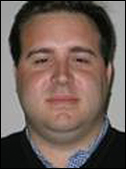ABSTRACT
The purpose of active learning is to solicit participation by students beyond the passive mode of traditional classroom lectures. Reading, writing, participating in discussions, hands-on activities, engaging in active problem solving, and collaborative learning can all be involved. The skills acquired during active learning tend to go above and beyond basic comprehension of information covered during a lecture. In fact, the goal of active learning is to not only enable student comprehension, but also to assist the student in cultivating valuable aptitudes for synthesizing, analyzing, and evaluating ideas and their learning potential. This captures a significantly larger portion of the Bloom’s Taxonomy than would be available in a lecture-only situation.
One model for active learning takes the form of tutorials, or more accurately described as active learning modules (ALMs), aimed at improving student learning in historically difficult subject areas in engineering through the application of finite element analysis. The tutorial set developed here includes learning modules for various subject areas in mechanical, electrical, and biomedical engineering courses.
The aim of this study is to determine if ALMs of this type are, in fact, effective active learning tools. In each participating course, after the student completes their traditional lecture series, they are introduced to a computer-based ALM. In order to perform a baseline study, students are administered content quizzes before and after the completion of the module. These quiz results are statistically analyzed to determine if subject aptitude, including comprehension, is improved. The incorporation of a novel assessment methodology reinforces the project goals as we are able to judge if these modules afford all students with an equal active learning process experience. The ALMs are shown to be a successful step towards improving aptitude and comprehension of challenging engineering content in an active learning environment.
Click for Full-Text PDF Article.







